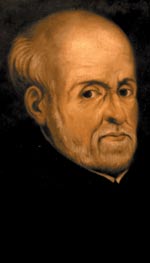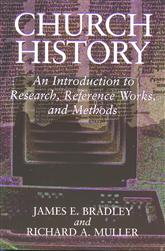 The program for the 2013 meeting of the Sixteenth Century Society Conference in Puerto Rico (October 24-27) has been posted, and it is encouraging to see a variety of panels focusing on digital research methods and topics. Here’s a quick overview:
The program for the 2013 meeting of the Sixteenth Century Society Conference in Puerto Rico (October 24-27) has been posted, and it is encouraging to see a variety of panels focusing on digital research methods and topics. Here’s a quick overview:
Friday, October 25, 3:30-5:00pm
114. Early Modern Italy and Pedagogical Practice: From Lay Conservatories to Digital Humanities (Flamingo B)
Organizer: Meredith K. Ray
Chair: Mark Judjevic
- Educating Rich and Poor Girls in Counter-Reformation Florence
Jennifer Haraguchi, Brigham Young University - Machiavelli and Castiglione: In Service to a Senior Humanities Seminar
Veena Carlson, Dominican University
120. Digital Maps (1): Mapping the History of Printing and Text Circulation (Tropical A)
Organizer: Colin F. Wilder
Chair: Niall Atkinson
- “And All the Good Journeymen”: Visualizing the Early Printing Trade
Greg Prickman, University of Iowa - Printing and Text-Transmission Networks in Early Modern Germany
Colin Wilder, University of South Carolina - A cultural Industry on the Digital Highway
Paul Dijstelberge, University of Amsterdam
Saturday, October 26, 8:30-10:00am
142. Digital Maps (2): Spatial Humanities / New Uses of Digital Mapping (Tropical A)
Organizer: Colin F. Wilder
Chair: Paul Dijstelberge
- Mapping the Soundscape of Pre-Modern Florence
Peter Leonard & Niall Atkinson, University of Chicago - Envisioning a Historiography: Geospatial and Thematic Connections between Local Social Histories of
Early Modern Europe
John Theibault, Richard Stockton College - Digital Maps (2): Spatial Humanities / New Uses of Digital Mapping
Paul Dijstelberge, University of Amsterdam - Waves of Empire: Mapping Renaissance Sovereignty at Sea
Jason Cohen, Berea College
Saturday, October 26, 10:30am-Noon
164. Digital Methods (1): Digitization, Editing and Text Curation (Tropical A)
Organizer: Colin F. Wilder
Chair: John Theibault
- A comparison of computer-assisted collation techniques
Gabriel Egan, De Montfort University - Standardization and Authenticity: Classroom Use of Archival and Digital Versions of Early Modern
English Manuscripts
Marie Baxter, Albion College - A Digital Edition of the Business Correspondence of the Venetian printer Giovanni Bartolomeo da
Gabiano (ca. 1520-1530): Some Technical and Scholarly Considerations
Giovanni Colavizza, Universitá Ca’Foscari Venezia
Saturday, October 26, 1:30-3:00pm
186. Digital Methods (2): Text Curation, Text Analysis and Network Analysis (Tropical A)
Organizer and Chair: Colin F. Wilder
- Little Gidding: An Early Modern Digital Humanities Collaboratory
Whitney Trettien, Duke University - Martyrs, Exiles and Dissemblers: The Networking of Protestants during the Marian Persecution (1553-1558)
Martin Skoeries, University of Leipzig - Topic-Modeling the Correspondence of Hugo Grotius
Matthew Simmermon-Gomes, University of Aberdeen
Saturday, October 26, 3:30-5:00pm
208. Roundtable: Early Modern Digital Humanities (Tropical A)
Organizer and Chair: Colin F. Wilder
Participants:
- Matthew Simmermon-Gomes, University of Aberdeen
- Whitney Trettien, Duke University
- John Theibault, Stockton College
- Greg Prickman, University of Iowa
- Paul Dijstelberge, University of Amsterdam
- Niall Atkinson, University of Chicago
Tropical A certainly looks like the place to be. You can download a PDF of the program here. This will be the first conference I’ve missed in a number of years, and it just happens to be one that is chock-full of sessions related to digital research! This is an encouraging trend, and no doubt one that will continue in the years ahead.



